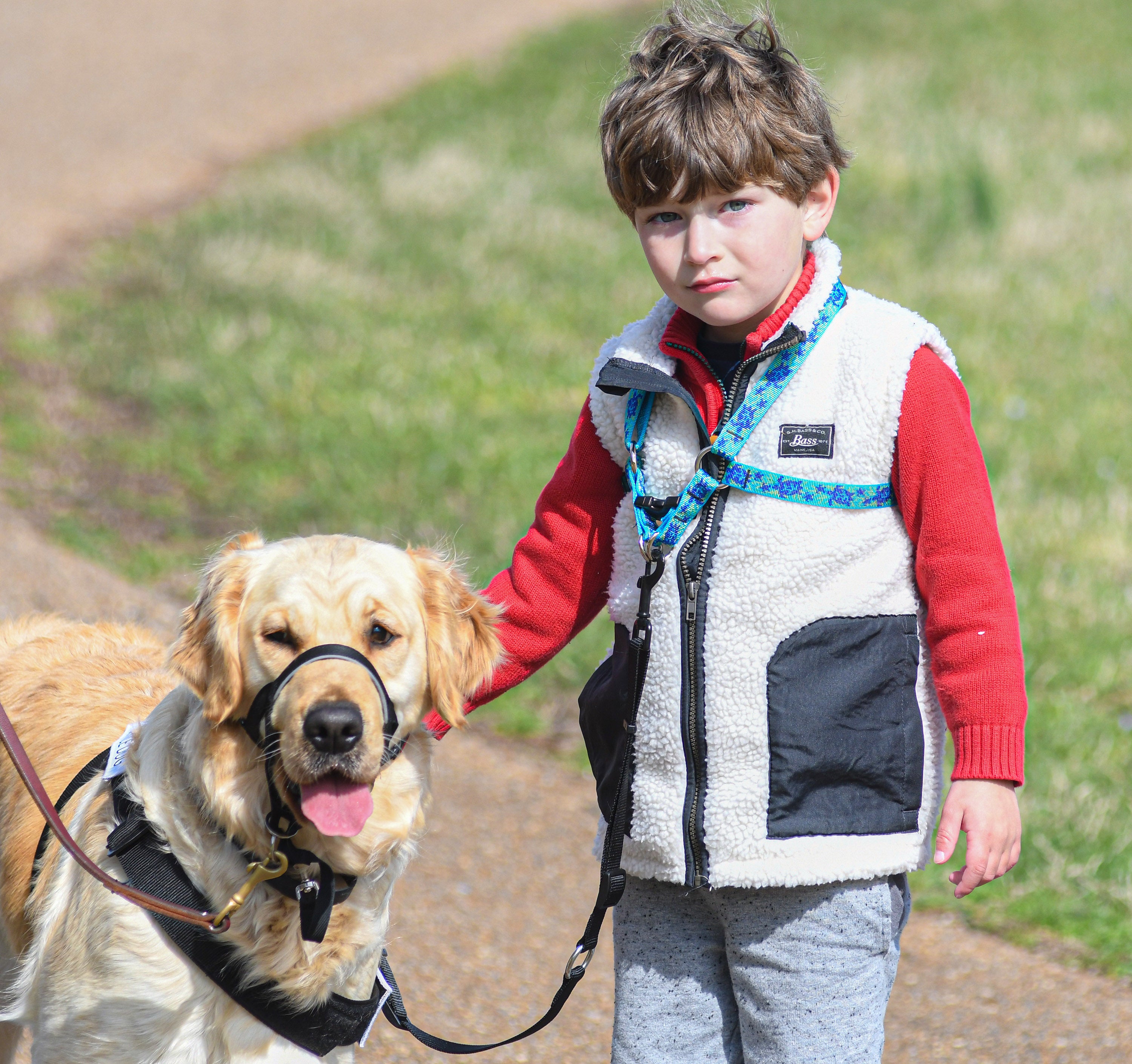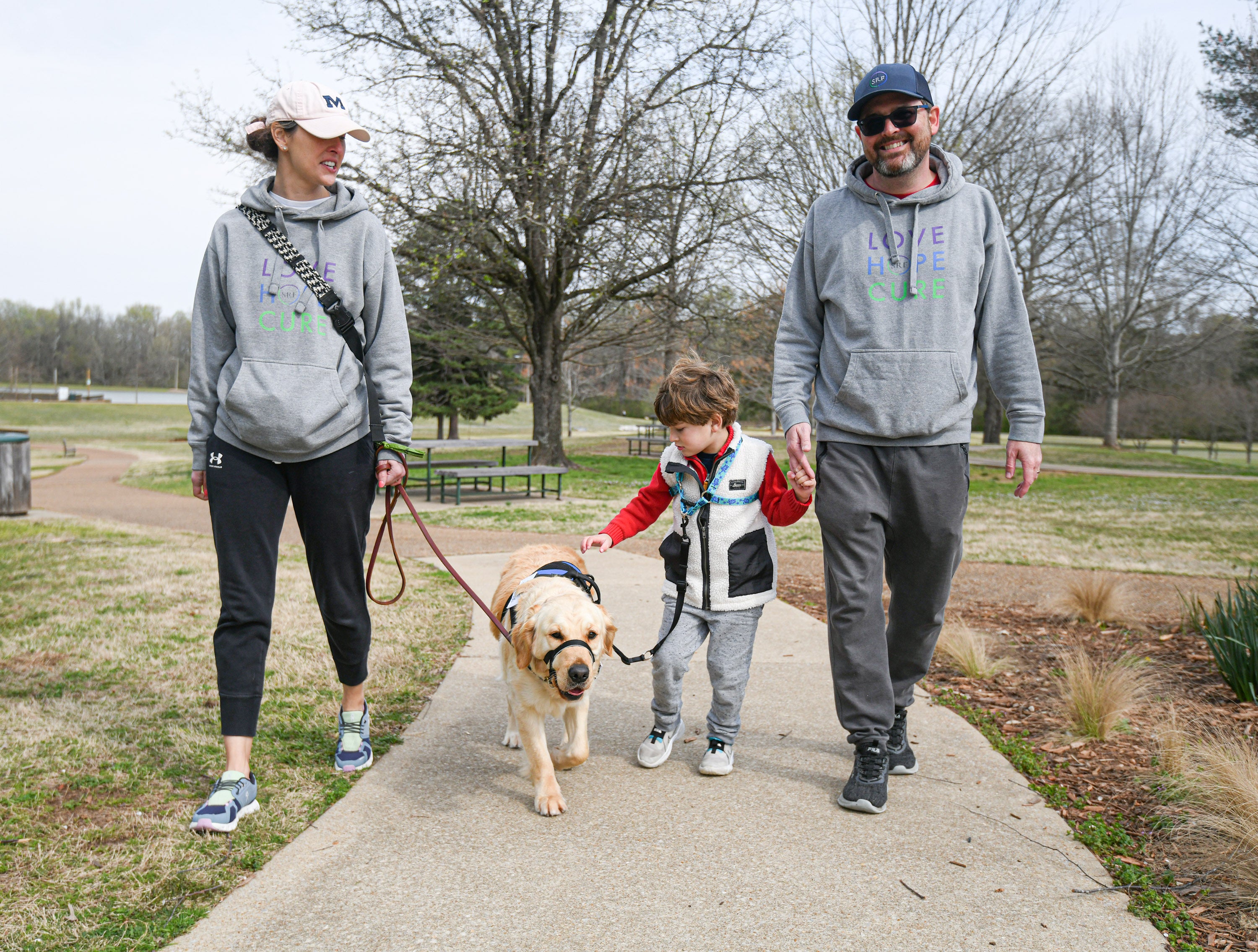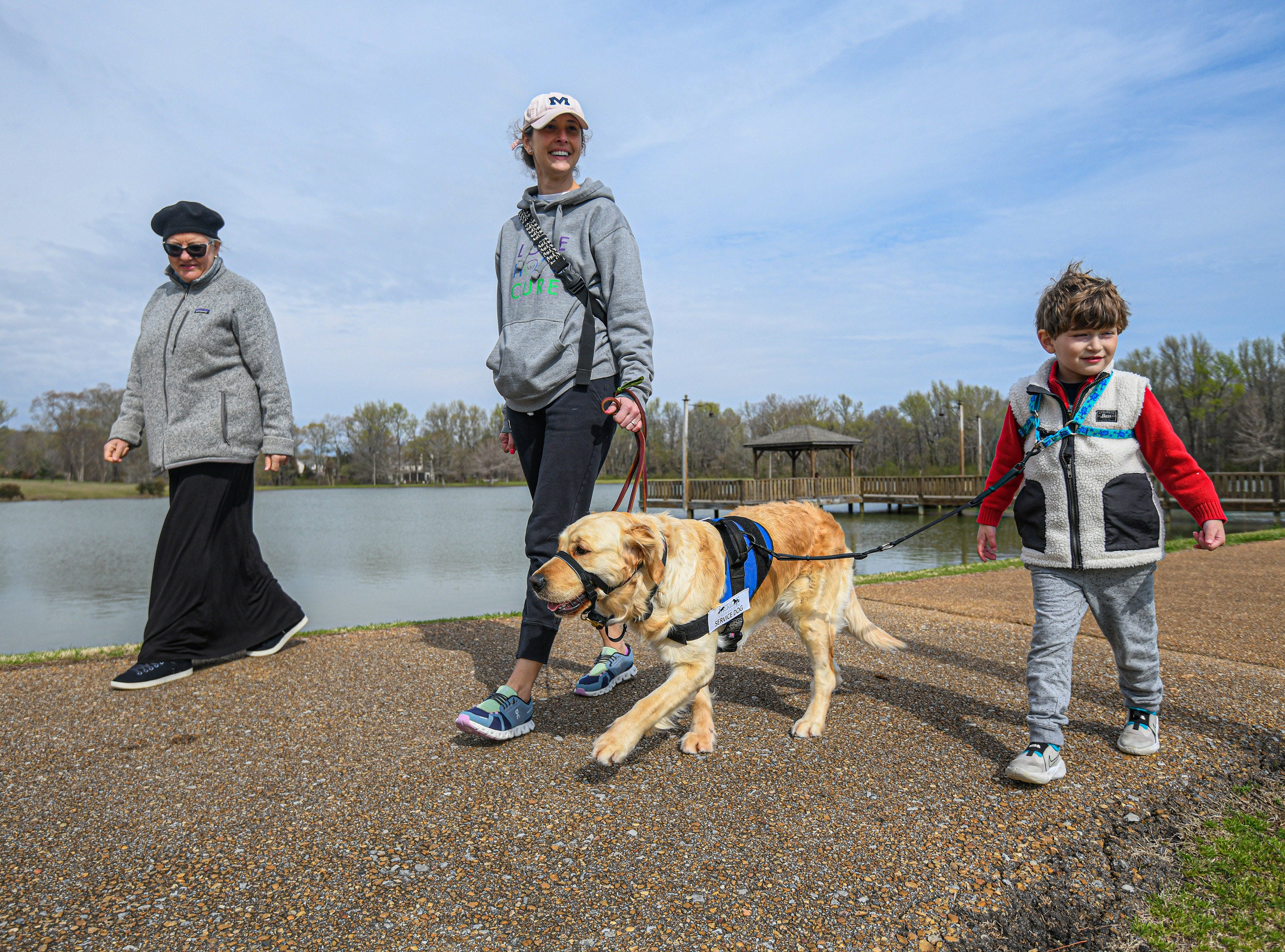Nathan’s dog
Published 2:18 pm Monday, April 3, 2023
By Angela Cutrer
Sometimes Nathan Frye can’t concentrate. A lot of folks around him kind of trips him up and he becomes overwhelmed with stress. That’s why Nathan now has Panda, a 2-year-old Golden Retriever who will become Nathan’s best friend and protector. It will all just take a little time for this new marriage between a little boy and his dog to become a long-lasting, life-changing partnership.
Kevin Frye, a managing partner of a law firm in Oxford, and his wife, Ashley, met with Ramona Meridus of Meridus K9 & Equine in California about finding their son a service dog. That’s when they heard about trainer Cecilia Anastos and a dog named after bear. The Frye’s son Nathan suffers from SynGAP1, a rare genetic mutation. SynGAP1, considered a spectrum disorder since patients are not affected exactly the same way or with the same severity, is not common, according to information on the SynGAP Research Fund’s website.
The human body is made of trillions of cells and each cell contains 23 pairs of chromosomes, which is 46 total,” the site states. Each of those chromosomes contains thousands of genes. Most genes come in pairs and we get one copy from each parent.
“The role of genes is to produce proteins, which are used to regulate the body’s tissues and organs. When a gene stops working or is no longer working properly, a variant (sometimes called a mutation or alteration) occurs. A variant is a mistake that happens, similar to a typo, when the DNA is copied from cell to cell or due to environmental factors.”
When he was a baby, Kevin and Ashley Frye saw that Nathan wasn’t hitting his age-related milestones and wondered if there was a problem. He had what seemed like temper tantrums and woke up at the same time every night, agitated and exhausted.
Once they realized he was having trouble swallowing when they introduced baby food into his life, Ashley started noticing Nathan’s eyes blinking or rolling back during feedings.
A subsequent EEG revealed Nathan was actually having epileptic activity and a genetic test showed SynGAP1 as the cause.
SynGAP1-related non-syndromic intellectual disability is a rare genetic disorder caused by a variant on the SynGAP1 gene. Without the right amount of SynGAP protein, those with SynGAP1 have “an increase in excitability in the synapses, making it difficult for neurons to communicate effectively. This leads to many neurological issues in patients.”
SynGAP1 variants have the incidence reported as 6 per 100,000 or 1 per 16,000 individuals.
There is no cure or specific treatment at this time. For the underlying condition that causes SynGAP1, the SRF reports that therapy can help these patients improve skills to reach milestones. These include physical, occupational, speech, developmental and applied behaviors analysis therapies. Alternative therapies such as hippotherapy, aqua, music and others may also help SynGAP1 patients.
As one of the founders of SRF, Mike Graglia explained, “We all have a protein called SynGAP in our brains that help our brains learn and remember. Kids with this syndrome have about half of what they should. As a result, they have issues with their brains working normally. This includes motor issues and autism, and the vast majority have epilepsy and most struggle to sleep.
A de novo variant means the variant is globally present for the first time in the family and occurred very early in the reproductive process. Most SynGAP patients have de novo variants.
It is not known what impacts the symptoms or their severity of SynGAP1. The list below is a combination of most seen symptoms. SynGAP1 patients do not always present all of these symptoms:
- Mild to severe intellectual disability
- low muscle tone
- Global development delay
- Epilepsy that may include subtle eyelid flutters, brief jerks, staring seizures and drop seizures
- Sensory Processing Disorder
- Gross and fine motor skill delays
- Coordination disorder
- Mild to severe speech delay/Apraxia
- Autism Spectrum Disorder
- Sleep and behavior disorders
- Visual abnormalities
Nathan Frye, 5, is a beautiful child with a small smile and brown hair. He looks angelic.
But if you look into his eyes, you see some wariness. He struggles with wanting to flee situations, which puts him in danger.
“He’s great in the classroom and at Sunday School, but in public places and wide open spaces with kids playing, he’s not going to be able to be still,” father Kevin said. “In the past, we had a stroller or we could carry him. He’s getting older, so we can’t do that anymore. We hope with Panda at his side, she will be successful in helping Nathan during those times.”
Nathan can’t control his temper because he can’t control his emotions, mom Ashley explained. “Panda will help Nathan with three skills. The first is as a seizure alert. Panda is trained on Nathan’s scent and can spot chemical changes. She will alert us and lick his face and mouth to stimulate breathing. She will also tap on him to alert the changes occurring.”
“Second, she will use pressure therapy to help him control his emotions. She will lay her body across his thighs, using pressure to calm him. Third is anchoring. When Nathan feels as though he needs to flee and run away, the harness attached to Panda will help him learn he can’t flee. Eventually, we hope he will learn that this attachment anchors him to Panda and she can comfort him.”
Nathan’s brother, Liam, is 7 and on board with having a new dog. “He is excited and understands that Panda is 100 percent focused on Nathan,” Ashley said. “Liam has empathy for Nathan and they are both animal lovers. Liam understands what Panda is for.”
Kevin said that he wanted the Oxford public to know what was going on with his son and why he would be attached to Panda.
“We’ve had so much support from the community,” he said. “From friends, family, everyone. Ashley and I and our family had a lot of joy being active in our community. But with Nathan’s public difficulties, we’ve found we can’t participate as we used to. We really miss that. Panda will allow us to go places as a family again.”
“We want people to understand that disabilities are not always apparent. They come in all kinds of shapes and sizes. Nathan looks like a regular child, but he presents differently. So Panda will have her service vest on that shows she’s working – working for Nathan.”
Ashley agreed with her husband’s assessment. “We need people to respect Panda’s job. Please respect the relationship and give them space. It will not be appropriate for someone to ask if they could pet Panda. She is there working and needs to keep her focus on Nathan.”
The Frye family feels as though their community has been so good to them and they want to get back out there and be more a part of the town they love. With Panda helping Nathan, things are looking as though that is finally possible.
For more information about SynGAP1, visit: ghr.nlm.nih.gov/primer/mutationsanddisorders/possiblemutations








